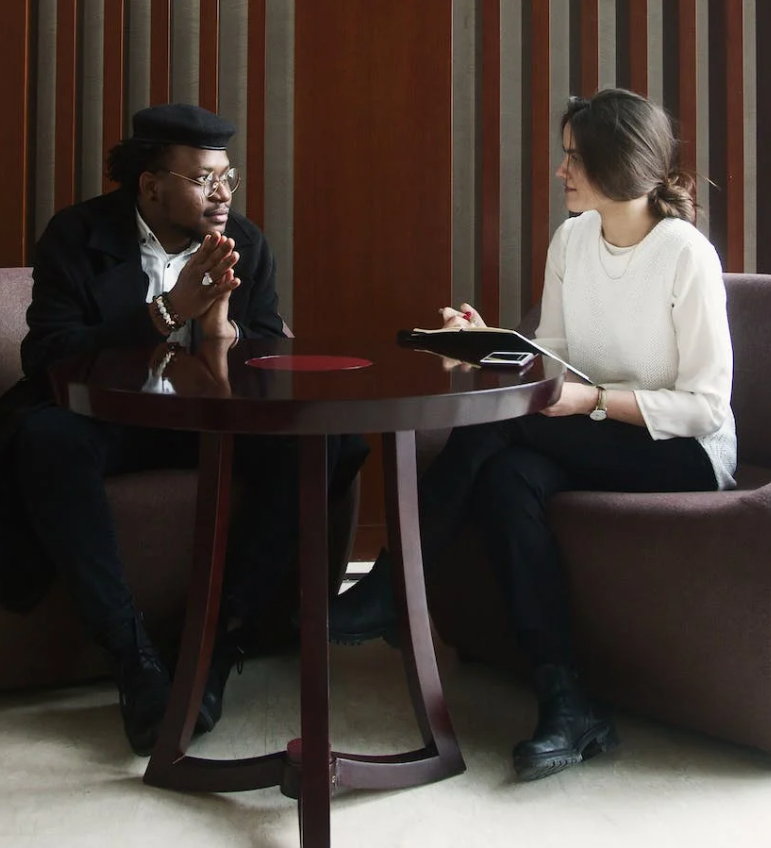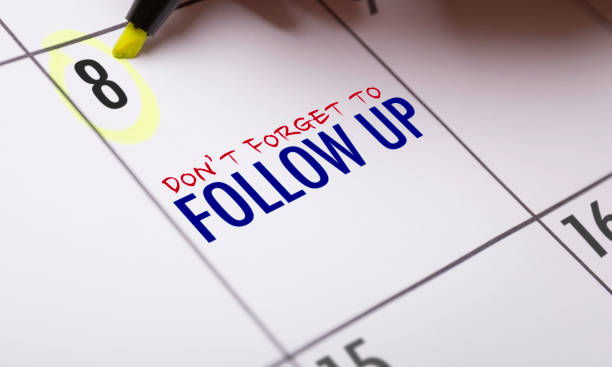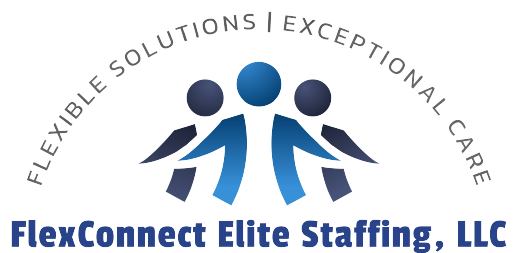
Embarking on a job interview can be both exciting and nerve-wracking. It’s your chance to showcase your skills, experience, and personality to potential employers. To help you navigate this crucial phase successfully, we’ve compiled a comprehensive set of 10 strategies that cover every aspect of the interview process. These strategies encompass the art of preparation, communication, and self-presentation, ensuring that you walk into every interview with confidence and poise. Let’s dive into these strategies that will not only help you answer questions but also create a lasting impression that sets you apart from the competition.
Research Thoroughly
Before stepping into an interview, thorough research about the company is crucial. This entails understanding the company’s history, values, culture, products or services, recent news, and any challenges it might be facing. Utilize the company’s website, social media platforms, news articles, and annual reports to gain insights. This knowledge not only helps you showcase your genuine interest during the interview but also allows you to tailor your responses to align with the company’s goals. Additionally, research the position you’re applying for and its responsibilities, as this will enable you to ask thoughtful questions and provide relevant examples of your skills and experiences during the interview. The more you know about the company and role, the more confident and prepared you will appear to the interviewer.
Dig beyond the company’s website. Explore recent news, industry trends, and company culture through social media and professional networks. This research allows you to discuss specific projects or achievements the company has made and demonstrates your commitment to being a well-informed candidate.
Understand the Job Description
Carefully analyze the job description to comprehend the specific skills, qualifications, and responsibilities the company is seeking in a candidate. Take note of keywords and phrases used in the description, as they can give you insights into what the company values most. Compare the requirements with your own qualifications and experiences to identify areas where you align well and areas that might need further preparation. This understanding will help you craft your responses during the interview to emphasize your suitability for the role. Furthermore, it enables you to ask targeted questions about the position and its expectations, demonstrating your enthusiasm and proactive approach to the interviewer. Aligning your answers with the job description not only showcases your suitability for the role but also makes it easier for the interviewer to envision you as part of the team.
Analyze the job description like a roadmap. Highlight keywords and phrases that indicate the key skills and responsibilities required. Prepare anecdotes from your experiences that directly relate to these points, showing how you’re a perfect fit.
Craft Your Story
During an interview, your goal is to make a memorable impression by sharing your experiences and achievements effectively. Craft a compelling narrative that highlights your professional journey, showcasing your growth, challenges, and accomplishments. Begin with an engaging introduction that provides a brief overview of your background, followed by key milestones that demonstrate your skills and qualities. Emphasize how your experiences have prepared you for the specific role you’re interviewing for. Tailor your story to align with the company’s values and the requirements of the position. Use the STAR method (Situation, Task, Action, Result) to structure your responses to behavioral questions. This technique helps you concisely convey your problem-solving skills, teamwork, and adaptability. By presenting your experiences as a coherent story, you make it easier for the interviewer to connect with your journey and envision you as an asset to their team.
Structure your answers using the STAR method (Situation, Task, Action, Result). This approach helps you share clear and concise stories about how you’ve handled challenges, taken initiative, and achieved outcomes in previous roles. It also demonstrates your ability to communicate effectively.
Ask Thoughtful Questions
Interviews are not just about answering questions; they’re also an opportunity for you to learn more about the company and position. Asking thoughtful questions demonstrates your genuine interest and engagement. Prepare a list of questions in advance that go beyond the basics. Inquire about the team dynamics, company culture, and the challenges the team is currently facing. This showcases your eagerness to contribute and shows that you’re considering the job from multiple perspectives.

Asking about the company’s goals and vision can help you understand how your role aligns with their long-term plans. Additionally, inquire about opportunities for growth and professional development. This signals that you’re invested in your career and interested in a long-term commitment.
During the interview, listen carefully to the information shared by the interviewer. This might inspire follow-up questions that demonstrate your analytical thinking and attention to detail. Moreover, don’t hesitate to seek clarification if a topic isn’t entirely clear.
Remember, asking insightful questions not only showcases your interest but also helps you gauge if the company is the right fit for you. It’s a two-way street – the interview should leave you with a clear understanding of the role and the company’s culture as much as it should leave the interviewer with insights about you.
Prepare insightful questions that reveal your interest in the company’s future plans and your potential role. Inquire about how success is measured, team dynamics, and growth opportunities. Your questions reflect your genuine curiosity and desire to contribute meaningfully.
Practice Makes Perfect
Just like any skill, interviewing requires practice to enhance your performance. Practicing various aspects of the interview process can significantly boost your confidence and presentation. Here’s how you can effectively practice:
- Mock Interviews: Conduct mock interviews with a friend, family member, or even in front of a mirror. This helps you practice answering common questions, refining your body language, and managing nerves.
- Record Yourself: Record a video of yourself answering interview questions. Review it to identify areas where you can improve your tone, clarity, and body language.
- Research Behavioral Questions: Identify common behavioral questions and formulate structured answers using the STAR (Situation, Task, Action, Result) method. Rehearse these answers until they feel natural.
- Time Management: Practice managing your time during interview responses. Aim for concise yet informative answers that keep the interviewer engaged.
- Adaptability: Practice being flexible in your responses to adapt to different interview styles. Some interviewers might prefer a conversational approach, while others may focus on technical aspects.
- Feedback: After mock interviews, seek constructive feedback. Ask your practice partner for insights on your strengths and areas that need improvement.
- Public Speaking: Engage in activities that improve your public speaking skills. Join a Toastmasters club or practice speaking in front of groups to develop your communication abilities.
- Addressing Gaps: Prepare to address any gaps in your resume or career changes confidently and transparently.
Remember that the goal of practicing is not to memorize answers but to build the confidence and flexibility needed to respond effectively in real interviews. Continuous practice can significantly enhance your interview performance and help you stand out as a polished candidate.
Rehearse your responses to common questions. Practice with a friend or in front of a mirror. This helps you refine your delivery, manage nerves, and ensure your answers flow naturally during the actual interview.
Body Language Matters
Effective communication goes beyond words – your body language also speaks volumes. Nonverbal cues matter as much as your words. A strong and positive body language can convey confidence, authenticity, and professionalism.

Here’s how to leverage body language to make a lasting impression during interviews:
- Maintain Eye Contact: Establish and maintain steady eye contact with the interviewer. This shows your interest and confidence in the conversation.
- Firm Handshake: Offer a firm and confident handshake when you meet the interviewer. It’s a simple gesture that portrays confidence and professionalism.
- Sit Up Straight: Sit with good posture, leaning slightly forward to show engagement. Avoid slouching or leaning back, which can be interpreted as disinterest.
- Gestures: Use natural and purposeful gestures to emphasize points. Avoid excessive or distracting gestures that may divert attention.
- Smile: A genuine smile can put both you and the interviewer at ease. It also signals that you’re approachable and enthusiastic.
- Mirroring: Subtly mirror the interviewer’s body language. This can create a sense of rapport and connection.
- Avoid Nervous Habits: Be aware of nervous habits like tapping your fingers or bouncing your leg. Minimize these distractions to appear focused and composed.
- Open and Confident Posture: Keep an open posture with arms relaxed at your sides or on the armrests of the chair. Crossing arms can be perceived as defensive or closed off.
- Active Listening: Nod and provide verbal cues like “I understand” to show that you’re actively listening and engaged in the conversation.
- Personal Space: Respect personal space by maintaining an appropriate distance. Standing too close may be uncomfortable, while standing too far can seem distant.
- Avoid Distractions: Put away your phone or any other distracting items during the interview. Focusing on the conversation demonstrates respect and professionalism.
- Control Nervous Habits: If you tend to fidget when nervous, practice relaxation techniques before the interview to minimize these behaviors.
- Hand Placement: Keep your hands visible and avoid crossing them over your body. Rest your hands naturally on the table or your lap.
- Gesture Moderation: While gestures can be effective, excessive or repetitive gestures can become distracting. Use them strategically and naturally.
Your body language is an essential part of your overall communication. Maintain good posture, offer a firm handshake, and make eye contact. These gestures convey confidence, professionalism, and a genuine interest in the conversation. By mastering positive body language, you can create a strong impression, establish rapport, and enhance your chances of leaving a memorable and positive impact on the interviewer.
Showcase Soft Skills
In today’s workplace, soft skills are highly valued. They reflect your ability to work well with others, adapt to new situations, and contribute positively to a team. Demonstrating these skills during an interview can set you apart from other candidates. Here’s how to effectively showcase your soft skills:
- Communication Skills: Clearly express your thoughts, listen actively, and ask relevant questions. Showcase your ability to convey complex ideas concisely and engage in meaningful conversations.
- Problem-Solving: Share instances where you identified challenges, analyzed options, and implemented effective solutions. Employers seek candidates who can think critically and creatively to overcome obstacles.
- Adaptability: Describe situations where you successfully adapted to changes in projects, team dynamics, or work environments. Highlight your flexibility and openness to new ideas.
- Team Collaboration: Provide examples of working collaboratively with diverse teams to achieve common goals. Emphasize your ability to contribute, compromise, and respect others’ perspectives.
- Leadership Skills: Even if you’re not applying for a leadership role, highlight moments when you took initiative, guided a project, or mentored colleagues. Leadership qualities are valuable in various positions.
- Time Management: Discuss how you manage tasks efficiently, prioritize responsibilities, and meet deadlines. Showcase your organizational skills and your ability to handle multiple projects.
- Emotional Intelligence: Share stories that demonstrate your ability to understand and manage emotions—both yours and others’. Employers value candidates who can navigate interpersonal dynamics with empathy and tact.
- Conflict Resolution: Describe instances where you successfully resolved conflicts or disagreements, showing your ability to find common ground and maintain positive relationships.
- Creativity and Innovation: Discuss times when you proposed innovative ideas, contributed to brainstorming sessions, or found novel solutions to challenges.
- Positive Attitude: Emphasize your enthusiasm, optimism, and resilience. Employers appreciate candidates who bring positivity to the workplace and motivate others.
- Critical Thinking: Describe situations where you analyzed complex information, evaluated pros and cons, and made well-informed decisions.
- Customer Focus: If relevant, share experiences that highlight your dedication to meeting customer needs and ensuring their satisfaction.
- Conflict Management: Talk about times when you effectively managed conflicts, helping to mediate disputes and restore positive working relationships.
- Cultural Sensitivity: Highlight instances when you interacted respectfully with people from diverse backgrounds and adapted to different cultural norms.
- Networking Skills: If appropriate, discuss how you’ve built professional relationships and expanded your network within and outside your organization.
By effectively showcasing your soft skills, you convey your potential to be a valuable asset to the company’s culture and growth. Incorporate examples into your responses, demonstrating that you possess the qualities that can contribute to the organization’s success. Use specific examples to demonstrate your soft skills like adaptability, teamwork, and problem-solving. Share instances where you’ve successfully navigated challenges, collaborated seamlessly, and contributed to positive team dynamics.
Address Weaknesses Gracefully
The prospect of discussing weaknesses during an interview can be daunting, but addressing them can actually work in your favor. Employers value candidates who display self-awareness, growth mindset, and a willingness to learn and improve. Here’s how to address weaknesses gracefully:
- Self-Reflection: Take time to reflect on your weaknesses before the interview. Identify areas where you’ve faced challenges or received constructive feedback.
- Choose Relevant Weaknesses: Select weaknesses that are relevant to the position you’re applying for. For example, if the role requires strong attention to detail, you might discuss how you’ve worked to improve in this area.
- Focus on Progress: Discuss weaknesses that you’ve actively worked on improving. Highlight instances where you’ve taken steps to overcome challenges and enhance your skills.
- Show Growth Mindset: Emphasize your commitment to personal and professional growth. Explain how you’ve sought out opportunities for learning, whether through training, workshops, or seeking feedback.
- Share Examples: Provide specific examples of how you’ve addressed weaknesses in the past. Describe the actions you took and the positive outcomes you achieved.
- Demonstrate Adaptability: Discuss how you’ve adapted your approach based on feedback or changing circumstances. Employers appreciate candidates who are open to change and willing to adjust their strategies.
- Highlight Transferable Skills: Frame weaknesses as opportunities for growth. For instance, if you’re transitioning to a new role, you could mention how skills from your previous experience might help you overcome the weakness.
- Discuss Strategies: Describe the strategies you’ve employed to improve in areas of weakness. This could include seeking mentorship, taking relevant courses, or setting specific goals.
- Emphasize Proactive Steps: Highlight instances where you identified weaknesses on your own and took proactive steps to address them, demonstrating your initiative and self-motivation.
- Show Positive Impact: Discuss how addressing weaknesses has positively impacted your performance and contributed to your overall effectiveness as a professional.
- Highlight Personal Growth: Share how addressing weaknesses has not only improved your professional skills but also contributed to your personal growth and development.
- Be Honest: While it’s important to present your weaknesses positively, avoid exaggerating your progress. Be honest about the challenges you’ve faced and the steps you’re taking to improve.
Remember, employers aren’t expecting perfection. What they value is your ability to recognize areas for improvement and your commitment to self-improvement. By addressing weaknesses with honesty and positivity, you demonstrate your authenticity and your potential to contribute effectively to the organization.
When asked about weaknesses, be honest but focus on areas that are unrelated to the role’s core requirements. Show how you’ve proactively worked on self-improvement, such as attending workshops or seeking mentorship, to overcome challenges.
Quantify Achievements
One of the most impactful ways to stand out in an interview is by quantifying your achievements. Numbers and metrics provide concrete evidence of your contributions and demonstrate the value you bring to a potential employer. Here’s how to effectively quantify your achievements:
- Identify Key Metrics: Begin by identifying the key performance indicators (KPIs) relevant to your role. These could include sales revenue, cost savings, customer satisfaction scores, project completion time, and more.
- Collect Data: Gather data and statistics that showcase your accomplishments. This could involve digging into performance reports, project results, or other relevant sources of information.
- Use Specific Numbers: Whenever possible, use specific numbers to quantify your achievements. For example, “Increased sales revenue by 25% in Q3” is more impactful than “Improved sales revenue.”
- Highlight Percentages: Percentages are effective for demonstrating growth, improvement, or efficiency. Whether it’s a percentage increase in productivity or a decrease in error rates, these numbers make a strong impression.
- Showcase Timeframes: Specify the timeframe over which you achieved your results. This adds context and helps the interviewer understand the scope of your accomplishments.
- Compare Before and After: If relevant, compare performance before and after your contributions. This highlights the direct impact you’ve had on a process or outcome.
- Highlight Dollar Amounts: If your achievements have contributed to cost savings or revenue generation, mention the specific dollar amounts. This demonstrates your financial impact.
- Use Action Words: Craft achievement statements using strong action verbs that convey your role in the success. For instance, “Led a team that reduced customer response time by 40%.”
- Be Honest: While quantifying achievements is important, ensure accuracy in your numbers. Misleading or inflated figures can undermine your credibility.
- Context Matters: Provide context for your achievements. Explain the challenges you faced and the strategies you implemented to achieve the results.
- Tailor to the Role: Customize your quantified achievements to align with the requirements of the role you’re interviewing for. Emphasize accomplishments that are most relevant to the position.
- Visual Aids: If appropriate, consider creating visual aids like graphs or charts to illustrate your achievements. This can help interviewers grasp the significance of your results.
- Impact on the Organization: Articulate how your achievements positively impacted the organization’s goals, whether it’s driving revenue growth, improving efficiency, or enhancing customer satisfaction.
- Prepare Talking Points: Practice explaining your quantified achievements concisely. Be ready to discuss the context, your role, and the outcomes in a clear and compelling manner.
- Tell a Story: Weave your quantified achievements into your interview responses as part of a broader narrative. This makes your accomplishments more memorable and impactful.
Numbers add credibility. Whenever possible, quantify your achievements with specific metrics. By quantifying your achievements, you provide tangible evidence of your skills, contributions, and the value you’ve delivered in previous roles. Numbers have a powerful way of making your accomplishments memorable and convincing, ultimately strengthening your candidacy for the position. Highlight how you increased sales by a certain percentage, improved customer satisfaction scores, or streamlined processes to save time.
Follow Up:
The interview doesn’t end when you walk out of the room. A well-timed and thoughtful follow-up can leave a lasting positive impression on the interviewers and further demonstrate your interest in the position.

Here’s how to effectively follow up after the interview:
- Send a Thank-You Email: Within 24 hours of the interview, send a personalized thank-you email to each interviewer. Express gratitude for their time and reiterate your enthusiasm for the role and the company.
- Reference Specifics: Mention specific points from the interview that resonated with you. This shows that you were engaged and attentive during the conversation.
- Reiterate Your Fit: Emphasize how your skills and experience align with the job requirements and the company’s needs. This reinforces your candidacy and showcases your understanding of the role.
- Highlight Cultural Fit: If culture was discussed during the interview, mention how your values and work style align with the company culture. This demonstrates your potential as a team player.
- Provide Additional Information: If you thought of something valuable to add after the interview, include it in your follow-up email. It’s an opportunity to further showcase your insights.
- Address Unanswered Questions: If there were questions you felt you didn’t fully address during the interview, use the follow-up to provide more comprehensive answers.
- Express Continued Interest: Politely state that you remain genuinely interested in the role and the company. This shows that your enthusiasm hasn’t waned after the interview.
- Share Insights: If you came across relevant articles, research, or industry news after the interview, consider sharing it with the interviewers. This highlights your ongoing engagement.
- Personalize Each Email: Customize your thank-you emails for each interviewer to acknowledge their role in the process. This demonstrates your attention to detail.
- Professional Tone: Keep your follow-up emails professional and concise. Avoid being overly casual, and proofread your message before sending.
- Check for Next Steps: If a timeline for the hiring decision was discussed during the interview, inquire about the next steps in the process.
- Reflect Enthusiasm: Use language that reflects your genuine enthusiasm for the opportunity. Avoid sounding desperate, but convey your eagerness to move forward.
- Show Patience: While it’s important to follow up, don’t be overly aggressive or impatient. Give the interviewers time to review all candidates and make a decision.
- LinkedIn Connection: If you’re connected on LinkedIn with the interviewers, consider sending a connection request. It’s a subtle way to keep the lines of communication open.
- Phone Follow-Up: If you haven’t received a response after a reasonable time, consider making a brief follow-up call. Express your continued interest and inquire about the status.
Following up after the interview demonstrates your professionalism, attention to detail, and strong communication skills. It reinforces your commitment to the role and leaves a positive impression on the interviewers. Keep in mind that while follow-up is important, it should be respectful and not overly persistent.
After the interview, send a personalized thank-you email within 24 hours. Express gratitude for the opportunity, refer to a memorable moment from the interview, and reiterate your enthusiasm for the role. This gesture reinforces your professionalism and leaves a positive impression.
By mastering these strategies, you’ll approach your interviews with confidence, present yourself as a well-prepared candidate, and increase your chances of making a strong and lasting impression on the interviewer. Best of luck in your interviews! 🌟🎉
In the dynamic landscape of job interviews, a well-prepared and confident approach can set you apart from other candidates. Implementing these ten strategies can significantly enhance your interview performance. Remember, the key lies in striking a balance between showcasing your skills and personality while aligning with the company’s culture and values. Each strategy is a building block towards creating a lasting impression and a compelling case for your candidacy. By diligently researching, crafting your narrative, showcasing your soft skills, and addressing weaknesses with grace, you create a holistic picture of your potential as an employee. Coupled with a genuine enthusiasm for the role and thoughtful follow-up, these strategies will empower you to navigate interviews with poise, elevate your prospects, and step confidently towards your desired career path.
